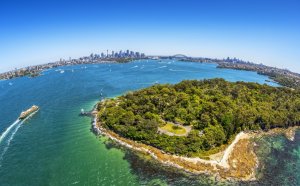
Blue Mountains New South Wales Australia
The unique flowers and creatures that live here relate an exceptional tale of advancement of Australia's unique eucalypt vegetation and its associated communities, plants and animals. It's a place of spectacular views, rugged tablelands, sheer high cliffs, deep, inaccessible valleys and swamps.
The more Blue Mountains was inscribed on World history checklist in 2000.
The higher Blue Mountains ended up being one of 15 World Heritage locations within the nationwide history List on 21 May 2007.
Place
The Greater Blue Mountains is made of 10, 000 km2 of mostly forested landscape on a sandstone plateau extending 60 to 180 kilometres inland from central Sydney, brand new South Wales.
Description of location
The home includes extremely extensive areas of an array of eucalypt communities and enormous tracts of wilderness. The large backwoods quality of much of the higher Blue Mountains constitutes an important and highly significant share to its World Heritage value and has guaranteed the stability of the ecosystems as well as the retention and protection of its heritage values.
The more Blue Mountains is a location of breathtaking views, rugged tablelands, absolute high cliffs, deep, inaccessible valleys and swamps teeming with life. The initial plants and creatures that inhabit this outstanding all-natural spot relate an extraordinary tale of Australian Continent's antiquity, its variety of life and its own superlative beauty. This is basically the story regarding the development of Australia's unique eucalypt vegetation and its associated communities, plants and pets.
The home is comprised of eight shielded areas in two obstructs separated by a transportation and urban development corridor. These shielded places will be the Blue Mountains, Wollemi, Yengo, Nattai, Kanangra-Boyd, Gardens of rock and Thirlmere Lakes National Parks, therefore the Jenolan Karst Conservation Reserve.
The area is a deeply incised sandstone plateau increasing from less than 100 metres above sea level to about 1300 metres within greatest point. You can find basalt outcrops from the higher ridges. This plateau is thought to own allowed the success of an abundant diversity of plant and pet life by providing a refuge from climatic modifications during present geological history. It's specifically noted for its large and balanced representation of eucalypt communities including damp and dried out sclerophyll to mallee heathlands, and localised swamps, wetlands, and grassland. One hundred and something species of eucalypts (over 14 percent of the international total) occur in the Greater Blue Mountains. Twelve among these tend to be considered to occur only in the Sydney sandstone region.
The evolution of eucalypts
The house is described as a normal laboratory for learning the evolution of eucalypts. The greatest section of high variety of eucalypts in the continent is found in southeast Australian Continent while the Greater Blue Mountains includes much of this eucalypt variety.
And promoting these types of a significant percentage worldwide's eucalypt species, the house provides types of the number of architectural adaptations of the eucalypts to Australian environments. These differ from high forests at the margins of rainforest in the deep valleys, through open woodlands and woodlands, to shrublands of stunted mallees in the exposed tablelands.
The ancient Wollemi pine
And its outstanding eucalypts, the more Blue Mountains also includes ancient, relict species of worldwide importance. More popular of those is the recently-discovered Wollemi pine, Wollemia nobilis, a "living fossil" dating back towards age of the dinosaurs. Considered to have now been extinct for scores of many years, the few surviving woods for this old types tend to be understood only from three tiny communities positioned in remote, inaccessible gorges in the better Blue Mountains. The Wollemi pine is amongst the planet's rarest species.
Fauna
A lot more than 400 different types of creatures reside inside the rugged gorges and tablelands for the Greater Blue Mountains. Included in these are threatened or rare types of conservation relevance, such as the spotted-tailed quoll, the koala, the yellow-bellied glider, the long-nosed potoroo, the green and golden bell frog together with Blue Mountains liquid skink. Flora and fauna of conservation importance and their particular habitats are a significant part of the planet history values of location.
The area is widely celebrated and thoroughly utilized for sight-seeing, bushwalking, rock-climbing, canyoning along with other outdoor recreational pursuits.
Share this Post
Related posts
Nambucca Heads, New South Wales
Thank you for visiting Eyecare Plus Optometrist Nambucca Heads Local optometrist Eyecare Plus Nambucca Heads target comprehensive…
Read MoreSydney New South Wales Australia weather
A slow-moving storm has actually hammered components of eastern Australia s New South Wales province with damaging winds…
Read More










